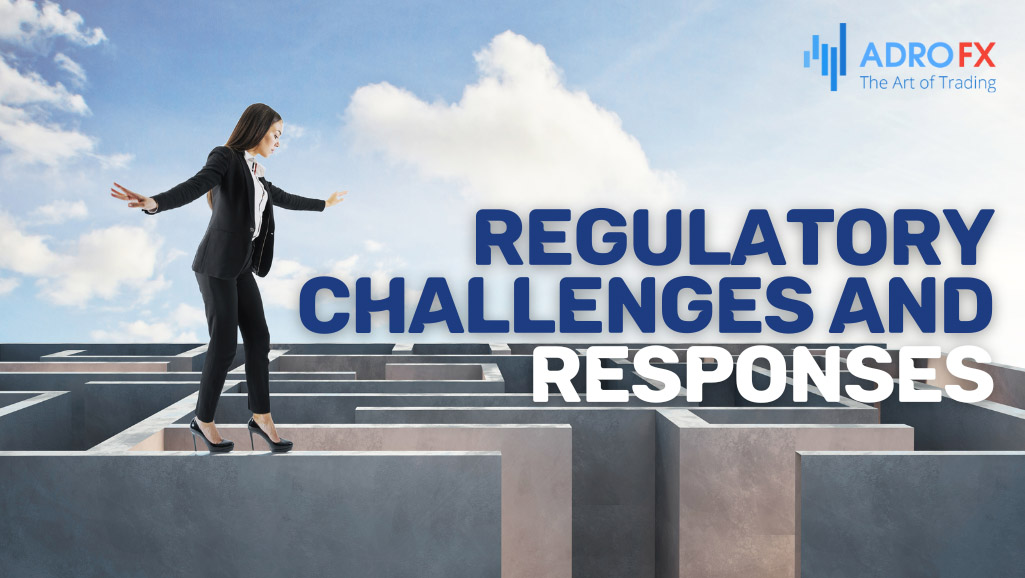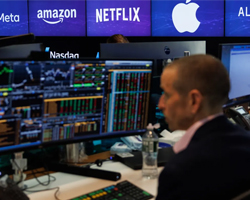Technological Innovations and Their Influence on Financial Markets

Technological innovations have revolutionized various industries, transforming how businesses operate and interact with consumers. In healthcare, advancements like telemedicine and robotic surgery have improved patient care and outcomes. The retail sector has been reshaped by e-commerce platforms and sophisticated supply chain management systems. Manufacturing has seen significant gains in efficiency and precision through automation and the use of artificial intelligence.
The financial markets have also undergone a profound transformation due to technological advancements.
This article focuses on how these innovations have changed the landscape of financial markets, enhancing efficiency, accessibility, and transparency. From the early days of electronic trading to the current era of high-frequency trading, blockchain technology, and artificial intelligence, technology has continually reshaped the way financial markets operate. By exploring the evolution and impact of these technological changes, we can better understand their benefits and challenges, and anticipate future developments in the financial sector.
Historical Perspective
The evolution of technology in financial markets has been marked by several key milestones that have significantly changed the way trading and financial transactions are conducted.
Electronic Trading
The shift from floor trading to electronic trading in the late 20th century marked the beginning of a new era in financial markets. This transition allowed for faster and more efficient trading processes. The introduction of the NASDAQ in 1971 as the world’s first electronic stock market eliminated the need for a physical trading floor, allowing traders to execute orders via computer networks. This innovation greatly increased market accessibility and reduced transaction costs.
Online Brokerage
In the 1990s, the rise of the internet brought online brokerage services, enabling individual investors to trade securities from their personal computers. Companies like E*TRADE and Charles Schwab democratized access to financial markets, providing tools and resources that were once available only to institutional investors. This period saw a significant increase in retail investor participation.
High-Frequency Trading (HFT)
The early 2000s saw the emergence of high-frequency trading, a form of algorithmic trading that uses powerful computers to execute orders at incredibly high speeds. HFT firms use complex algorithms to analyze market data and make trades in fractions of a second. This development has increased market liquidity and efficiency but also raised concerns about market stability and fairness.
Blockchain and Cryptocurrencies
In 2008, the introduction of Bitcoin and the underlying blockchain technology opened new possibilities for financial transactions. Blockchain offers a decentralized, transparent, and secure method of recording transactions, which has potential applications beyond cryptocurrencies, including clearing and settlement processes in traditional finance.
Artificial Intelligence and Machine Learning
Recent advancements in artificial intelligence (AI) and machine learning have further transformed financial markets. AI algorithms can process vast amounts of data to identify patterns and predict market movements, enhancing decision-making for traders and financial institutions. Machine learning models are also used in risk management, fraud detection, and personalized financial services.
These milestones illustrate the continuous impact of technology on financial markets, driving greater efficiency, accessibility, and complexity. As technology evolves, it will undoubtedly continue to shape the future of financial markets, presenting new opportunities and challenges for all market participants.

Major Technological Innovations in Financial Markets
Technological innovations have dramatically transformed financial markets, enhancing efficiency, accessibility, and transparency while introducing new challenges and risks. Algorithmic trading, for example, uses computer algorithms to execute trades automatically based on predefined criteria. This technology has improved market efficiency by reducing transaction times and minimizing human error. It also enhances liquidity by enabling a high volume of trades in a short period, ensuring that buy and sell orders are matched more effectively and often leading to tighter bid-ask spreads.
High-frequency trading (HFT), a subset of algorithmic trading, utilizes sophisticated algorithms and high-speed data networks to execute orders at incredibly rapid speeds. HFT has significantly influenced market dynamics by increasing trading volume and liquidity. While it can stabilize prices through arbitrage and liquidity provision, it has also been associated with market instability, particularly during times of stress, as seen during the "Flash Crash" of 2010. The sheer volume of HFT activity can sometimes amplify market movements, resulting in rapid and significant price swings.
Blockchain technology, a decentralized digital ledger, has also made a significant impact. It records transactions securely and transparently across a network of computers. Bitcoin, the first cryptocurrency to utilize blockchain technology, introduced in 2008, paved the way for numerous other cryptocurrencies, offering an alternative to traditional fiat currencies. These digital currencies have disrupted traditional financial markets by providing decentralized financial systems and enabling peer-to-peer transactions without intermediaries. While they offer new investment opportunities, they also pose regulatory challenges and concerns about volatility.
Artificial intelligence and machine learning are being increasingly employed in financial markets to analyze large datasets, identify patterns, and make predictions. AI algorithms optimize trading strategies, predict potential risks, and detect fraud. Financial analysis benefits from AI's ability to process complex data and generate insights, enhancing decision-making and efficiency. However, the risks include algorithmic biases, lack of transparency, and significant computational resource requirements. Overreliance on AI could lead to systemic risks if many market participants use similar algorithms.
Robo-advisors, digital platforms providing automated financial planning services with minimal human intervention, use algorithms to assess an investor's risk tolerance, financial goals, and time horizon to create and manage diversified portfolios. They offer lower fees, accessibility, and elimination of human bias, making investment management accessible to a broader audience. However, challenges include limited personalization compared to human advisors, the need for investor education on using these platforms, and potential technical issues.
Big data, encompassing vast volumes of data generated from various sources such as market transactions, social media, and economic reports, plays a crucial role in financial decision-making. Big data analytics processes this information to uncover trends, patterns, and correlations that inform investment decisions and risk management strategies. Data-driven strategies in trading, such as sentiment analysis and predictive analytics, use historical data to forecast future price movements. Investment firms leverage big data to enhance portfolio management, optimize asset allocation, and improve client services by tailoring investment recommendations based on detailed data analysis.
As technology continues to evolve, its impact on financial markets will likely grow, presenting both opportunities and complexities for market participants. Navigating this landscape requires careful management and regulation to maximize the benefits of technological advancements while mitigating associated risks.
Impact on Market Participants
- Individual Investors
Technological advancements have greatly benefitted individual investors by providing access to advanced tools and information that were once only available to institutional investors. Online trading platforms, robo-advisors, and financial apps offer real-time data, sophisticated analytics, and automated investment advice, enabling individuals to make informed decisions and manage their portfolios more effectively. These innovations have democratized investing, increasing participation in financial markets by lowering barriers to entry and reducing costs. Individual investors can now easily diversify their investments and employ strategies that align with their financial goals and risk tolerance.
- Institutional Investors
For institutional investors, technology has revolutionized portfolio management and risk assessment. Advanced algorithms and machine learning models analyze vast amounts of data to identify investment opportunities, optimize asset allocation, and manage risk. These technologies provide a competitive edge by enhancing decision-making processes and improving the accuracy of market forecasts. However, the rapid pace of technological change also presents challenges. Institutions must continuously invest in new technologies and ensure their teams are skilled in using them. Additionally, the reliance on complex algorithms increases the risk of systemic errors and the need for rigorous oversight to prevent unintended consequences.
- Financial Institutions
Technology integration has become a cornerstone of operations for financial institutions, including banks and asset management firms. Automation, artificial intelligence, and blockchain technologies have streamlined processes, reduced operational costs, and improved customer experiences. For example, blockchain can enhance transparency and security in transactions, while AI-powered chatbots provide efficient customer service. However, these advancements come with operational risks, such as cybersecurity threats and the need for robust data protection measures. Financial institutions must balance efficiency gains with the necessity of maintaining secure and reliable systems.

Regulatory Challenges and Responses
The rapid pace of technological innovation in financial markets has raised several regulatory concerns. Regulators are tasked with addressing issues such as market manipulation, data security, and systemic risk. The increased use of algorithms and high-frequency trading, for instance, has heightened the potential for market manipulation and flash crashes. Regulators must ensure that these technologies do not compromise market integrity or stability.
Data security is another critical concern. The vast amounts of data generated and processed by financial technologies are attractive targets for cyberattacks. Regulators must enforce stringent data protection standards and ensure that financial institutions implement robust cybersecurity measures to safeguard sensitive information.
Systemic risk is a significant challenge posed by the interconnected nature of modern financial technologies. The failure of one algorithm or system can have cascading effects across the market, potentially leading to widespread disruption. Regulatory bodies must develop frameworks that address these risks, ensuring that financial systems remain resilient in the face of technological failures.
To address these challenges, regulatory bodies around the world are taking proactive measures. For example, the Securities and Exchange Commission (SEC) in the United States has implemented rules requiring greater transparency in algorithmic trading and high-frequency trading practices. The European Union’s General Data Protection Regulation (GDPR) sets high standards for data security and privacy, impacting financial institutions globally. Additionally, central banks and financial regulators are exploring the use of regulatory technology (RegTech) to monitor and manage risks more effectively. RegTech solutions leverage AI and big data to enhance regulatory compliance, improve risk assessment, and ensure real-time monitoring of financial activities.
In summary, while technological innovations offer significant benefits to market participants, they also introduce new risks and challenges. Regulatory bodies must continually adapt to these changes, implementing measures that protect market integrity, ensure data security, and mitigate systemic risks. By doing so, they can help create a stable and secure financial environment that fosters innovation and growth.
Future Trends and Predictions
Looking ahead, several emerging technologies are set to further revolutionize financial markets. Quantum computing stands out as a particularly promising development. Unlike classical computers, quantum computers can process vast amounts of data and solve complex problems at unprecedented speeds. This capability could dramatically enhance the efficiency of trading algorithms, risk modeling, and portfolio optimization, leading to more precise and faster decision-making processes.
Decentralized finance (DeFi) is another burgeoning area that could significantly reshape financial markets. Built on blockchain technology, DeFi aims to create an open, permissionless, and highly interoperable financial system that operates without traditional intermediaries. This could democratize access to financial services, reduce costs, and increase transparency. As DeFi platforms and protocols mature, they might challenge the dominance of traditional financial institutions, offering alternatives for lending, borrowing, and trading assets.
In the near future, we can expect financial markets to become even more interconnected and technology-driven. The integration of artificial intelligence and machine learning will continue to expand, enhancing predictive analytics, fraud detection, and personalized financial advice. Additionally, the use of big data and advanced analytics will enable more sophisticated risk management and investment strategies.
Moreover, the convergence of financial technology with other emerging trends such as the Internet of Things (IoT) and 5G could lead to new financial products and services. For instance, real-time data from IoT devices might be used to create dynamic insurance policies or enable real-time credit scoring.
Conclusion
In summary, technological innovations have profoundly transformed financial markets, offering significant benefits while also introducing new challenges. From algorithmic and high-frequency trading to blockchain and artificial intelligence, technology has enhanced market efficiency, accessibility, and transparency. Individual and institutional investors alike have gained access to advanced tools that improve decision-making and risk management.
However, these advancements also necessitate robust regulatory frameworks to address issues such as market manipulation, data security, and systemic risk. Regulators must continually adapt to keep pace with technological changes, ensuring that financial markets remain stable and secure.
Looking to the future, emerging technologies like quantum computing and decentralized finance hold the potential to further revolutionize the financial landscape. As these technologies evolve, they will likely drive new levels of efficiency, accessibility, and innovation in financial markets.
Ultimately, the balance between fostering innovation and ensuring effective regulation will be crucial for sustainable market growth. By embracing technological advancements while implementing rigorous oversight, we can harness the transformative power of technology to create a more dynamic, inclusive, and resilient financial system.
About AdroFx
Established in 2018, AdroFx is known for its high technology and its ability to deliver high-quality brokerage services in more than 200 countries around the world. AdroFx makes every effort to keep its customers satisfied and to meet all the trading needs of any trader. With the five types of trading accounts, we have all it takes to fit any traders` needs and styles. The company provides access to 115+ trading instruments, including currencies, metals, stocks, and cryptocurrencies, which make it possible to make the most out of trading on the financial markets. Considering all the above, AdroFx is the perfect variant for anyone who doesn't settle for less than the best.










